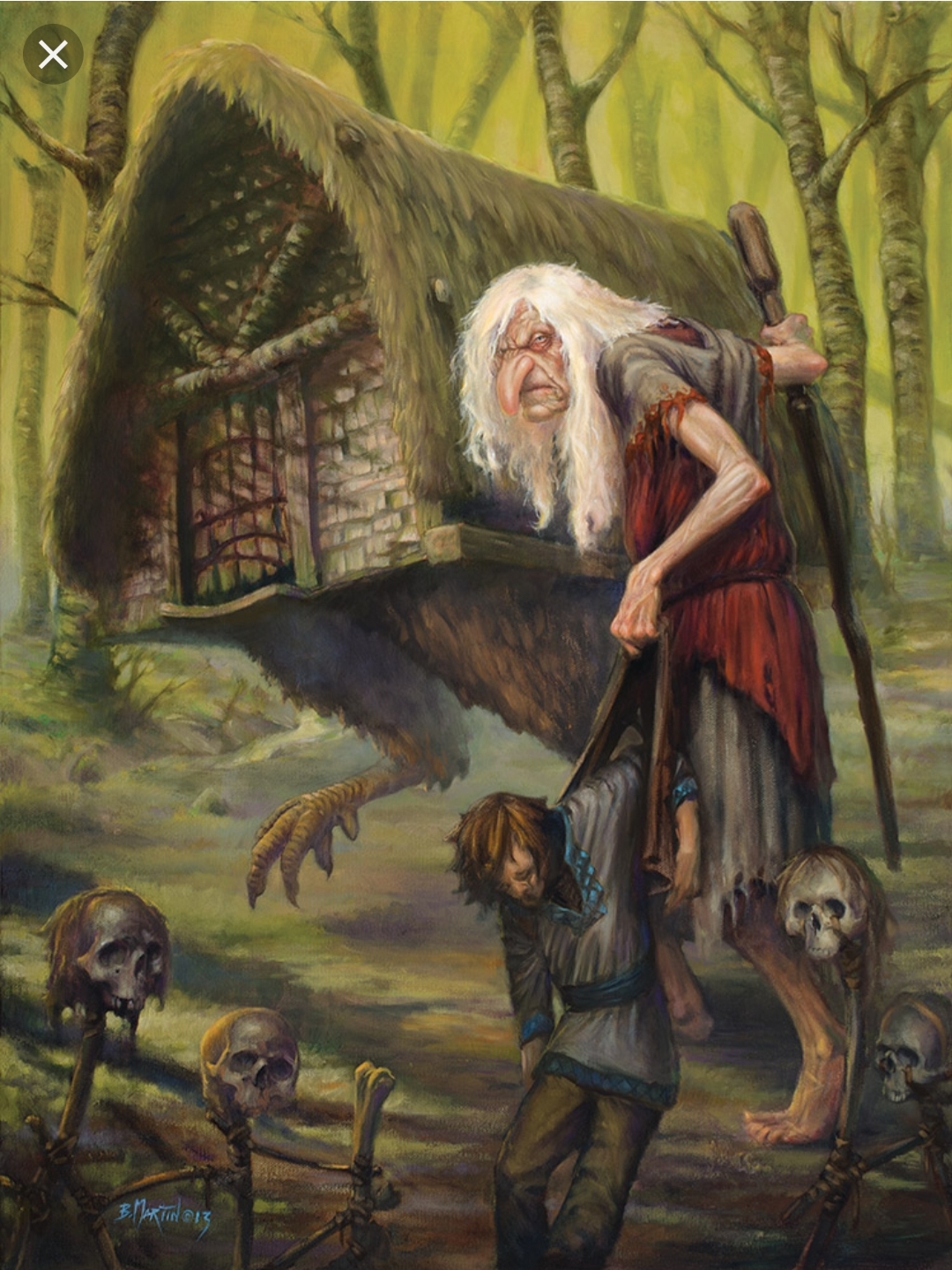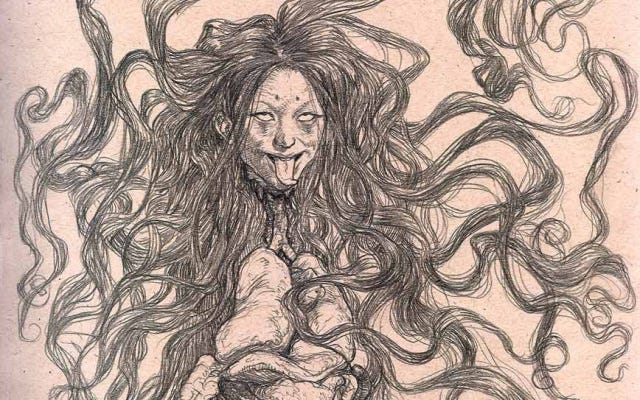Deep within the rich tapestry of Slavic folklore lies a captivating and mysterious figure known as Baba Yaga. For centuries, this enigmatic witch has fascinated and intrigued both young and old, transcending cultural boundaries with her distinctive blend of terror and wisdom. In this article, we embark on a journey to uncover the origins, characteristics, and legends surrounding Baba Yaga, delving into her complex nature as a powerful symbol of femininity, the wild forces of nature, and the delicate balance between good and evil.
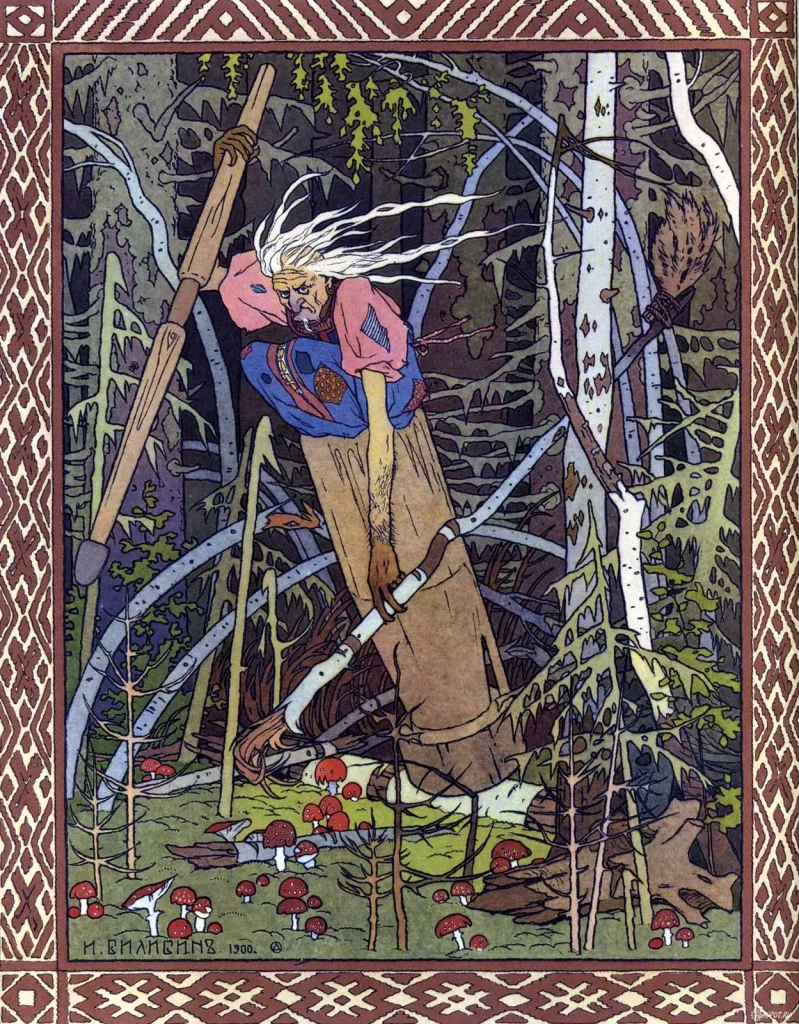
Origins
Baba Yaga finds her roots in the vast realm of Slavic folklore, predominantly known in the regions of Eastern Europe. Her tales have been passed down through generations, capturing the imaginations of countless individuals. Baba Yaga is often portrayed as an old, powerful witch with a haggard appearance and a penchant for living deep within the forest.
The origins of Baba Yaga can be traced back to pre-Christian Slavic beliefs, where she was associated with various deities and spirits. One prevailing theory suggests that she is a remnant of the ancient Slavic goddess of death, Morana, who embodied the cycle of life, death, and rebirth. Over time, as Christianity spread through the region, pagan beliefs merged with the new religious ideologies, resulting in the transformation of Baba Yaga into a more sinister figure associated with witchcraft.
Symbolic Significance
Baba Yaga holds profound symbolic significance within Slavic mythology. She is often seen as a representation of the untamed forces of nature and the wilderness. Her dwelling, typically depicted as a hut standing on chicken legs, is believed to be a manifestation of the forest itself—a realm where the natural and supernatural converge. This connection to nature aligns Baba Yaga with the primal aspects of life, reflecting humanity’s intrinsic relationship with the wild.
Furthermore, Baba Yaga personifies the duality of existence. She embodies both malevolent and benevolent aspects, blurring the line between good and evil. This dual nature is reflected in her treatment of individuals who seek her guidance or fall into her path. Baba Yaga can act as a terrifying adversary, challenging those who dare to cross her, but she also possesses wisdom and can bestow powerful gifts upon those who pass her tests.
As such, Baba Yaga serves as a complex symbol, representing the inherent balance between light and darkness, the ambiguous nature of morality, and the transformative power of confronting one’s fears and inner demons.
Physical Behavior and Attributes
Baba Yaga is often depicted as an elderly woman, hunched over with a wizened face and long, unkempt gray hair. She usually flies around in a mortar and wields a pestle. So what does Baba Yaga mean? She is commonly referred to as “Baba,” meaning “old woman” or “grandmother” in Slavic languages. The term “Yaga” is derived from the ancient Proto-Slavic word “jędza” or “jędzała,” which translates to “hag” or “witch.”
Baba Yaga’s House
One of the most distinctive features associated with Baba Yaga is her peculiar abode—a hut perched atop chicken legs. This magical dwelling is said to move and rotate, allowing Baba Yaga to traverse great distances with ease. The legs of the hut are often depicted as animated, possessing sentience and a will of their own. The house is also surrounded by a fence made of human bones, adding to its eerie and intimidating presence.
The house on chicken legs represents the liminal space between the human realm and the supernatural. It acts as a gateway into Baba Yaga’s domain, a place where ordinary rules and norms are suspended, and the laws of nature are twisted.

Baba Yaga’s Familiar
Baba Yaga is frequently accompanied by a variety of supernatural beings, most notably her faithful steed. Descriptions of this steed vary, with some tales portraying it as a skeletal horse, while others depict it as a ferocious beast such as a wolf or a boar. This creature aids Baba Yaga in her travels and adds to her aura of power and otherworldliness.
Baba Yaga’s physical attributes, from her aged appearance to her peculiar dwelling and mystical companions, contribute to her portrayal as an otherworldly figure. These elements serve to heighten the sense of mystery and enchantment surrounding her character, making her an intriguing and formidable presence within Slavic folklore.
Baba Yaga the Dangerous Trickster
Baba Yaga is often portrayed as a trickster figure, capable of unpredictable and mischievous behavior. She revels in playing pranks, testing the wit and courage of those who venture into her domain. Baba Yaga is known to set difficult tasks or riddles for her visitors, demanding they complete them successfully if they wish to receive her assistance or escape her clutches. Her tricks and challenges serve as a cautionary reminder that one must navigate the complexities of life with wisdom and resourcefulness.
Moreover, Baba Yaga is not without her malevolent side. She is sometimes depicted as a witch who kidnaps and devours children or uses dark magic to harm those who cross her. Her fearsome reputation as a supernatural threat adds an element of danger and suspense to the tales involving her, heightening the stakes for those who encounter her in their journeys.
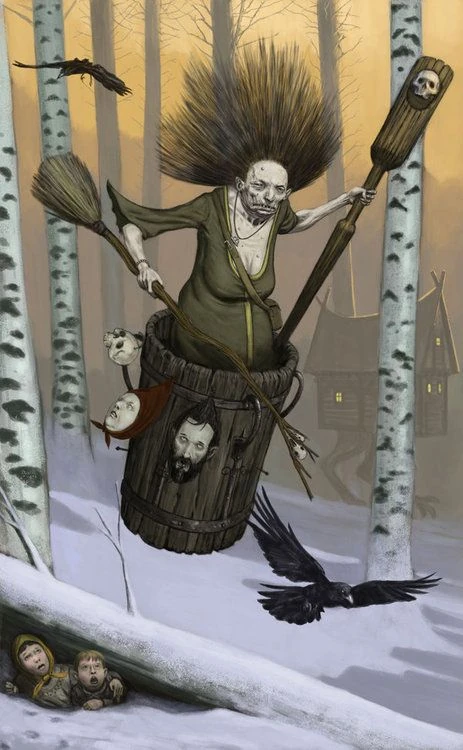
Baba Yaga the Wise and Unpredictable Mentor
Contrasting her role as a trickster, Baba Yaga also possesses a wealth of wisdom and knowledge. She is often sought out by heroes and heroines in Slavic folklore as a mentor figure who imparts valuable insights and magical gifts. Those who approach her with humility, courage, and a pure heart may find themselves rewarded with guidance, enchanted objects, or transformative experiences.
Baba Yaga’s wisdom transcends conventional understanding, as she embodies the ancient and primal forces of nature. Her connection to the wilderness grants her profound insights into the cycles of life, death, and rebirth. As such, she serves as a bridge between the human world and the realm of the supernatural, offering guidance to those who seek enlightenment or assistance on their journeys.
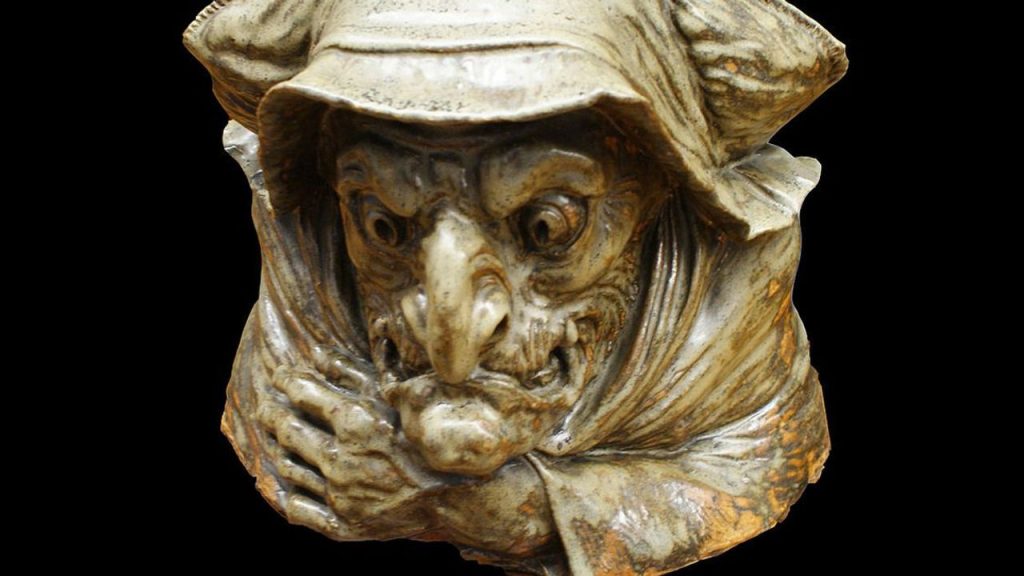
The Moral Trials
Central to the encounters with Baba Yaga are the moral trials she presents to individuals. These trials often test the character’s integrity, bravery, and resourcefulness. They serve as a transformative experience, allowing the protagonist to confront their fears, develop their inner strength, and acquire the wisdom necessary to navigate the challenges of life.
Baba Yaga’s moral trials are not straightforward, as her intentions and actions are rarely clear-cut. She is a complex figure, blurring the lines between good and evil, and her tests are often shrouded in ambiguity. It is through these trials that individuals learn to navigate the gray areas of morality and make choices that align with their true nature.
By embodying both the dark and light aspects of humanity, Baba Yaga acts as a catalyst for personal growth and self-discovery. She reminds us that the path to wisdom and transformation often requires confronting the shadows within ourselves.
In the following section, we will delve into the encounters and legends associated with Baba Yaga, exploring the diverse narratives that have woven her into the fabric of Slavic folklore.
Baba Yaga in the Heroic Tales
Baba Yaga frequently appears in tales featuring heroes and heroines embarking on perilous quests. These encounters test the protagonists’ mettle and offer opportunities for growth and transformation. In such stories, individuals seek Baba Yaga’s assistance, guidance, or magical artifacts to aid them in their quests.
One well-known example is the story of Vasilisa the Beautiful, a young girl sent by her wicked stepmother into the forest to fetch a light from Baba Yaga’s hut. Vasilisa undergoes Baba Yaga’s trials with resourcefulness and perseverance, ultimately gaining the witch’s favor and receiving a magical item that helps her overcome subsequent challenges.
Another famous legend involves the hero Ivan Tsarevich, who encounters Baba Yaga during his quest to rescue the princess from an enchanted castle. Baba Yaga aids Ivan by providing him with a horse and advice, testing his loyalty and courage along the way.
These tales highlight Baba Yaga’s role as a catalyst for heroism, imparting valuable lessons and assistance to those who display qualities of bravery, resourcefulness, and integrity
Baba Yaga in Tales of Young Maidens
Baba Yaga’s interactions with young maidens are another recurring theme in Slavic folklore. Often, young girls seeking answers, guidance, or assistance find themselves at Baba Yaga’s doorstep. These encounters become transformative experiences, where the maidens navigate the challenges set by Baba Yaga to prove their worth.
In some versions, Baba Yaga takes on the role of a wise mentor to these young maidens, imparting important life lessons and offering guidance on their paths to maturity. In other tales, she tests their virtue, challenging them to complete difficult tasks or solve riddles to prove their character.
These narratives emphasize the transition from innocence to womanhood and the importance of self-discovery, resilience, and moral strength in the face of adversity.
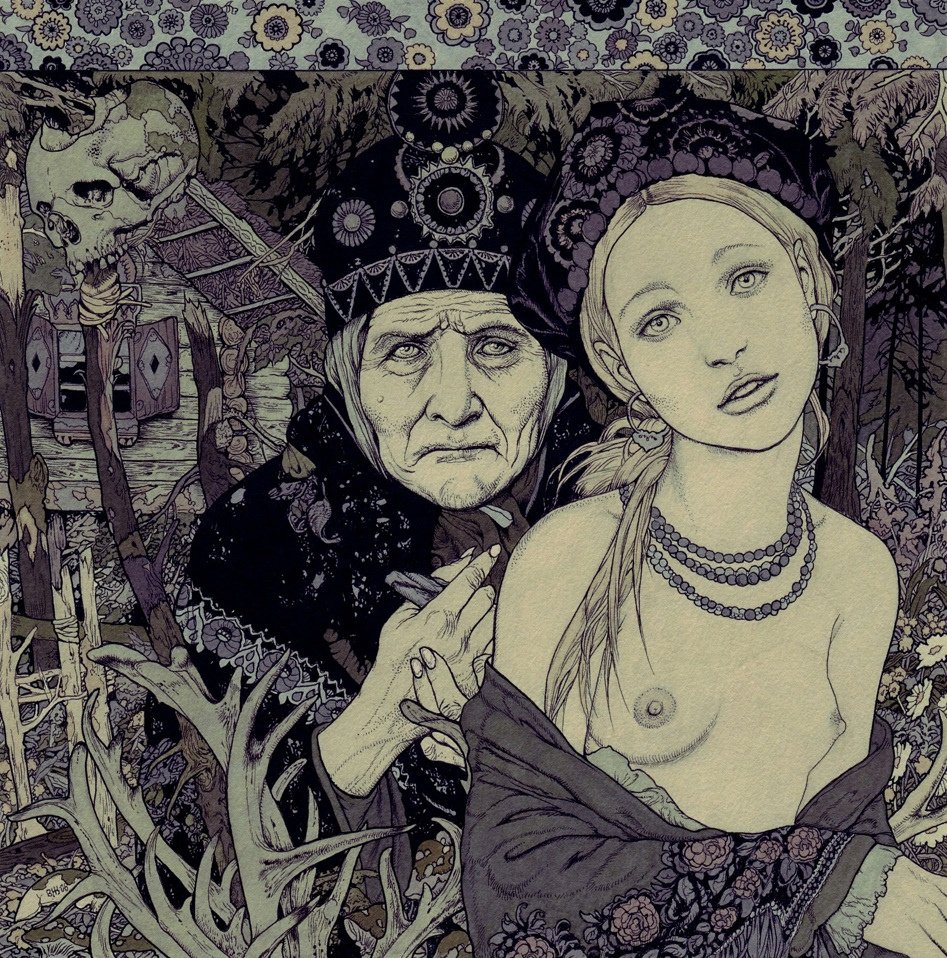
Baba Yaga and the Quest for Wisdom
Baba Yaga is often sought out by those in search of wisdom and enlightenment. Scholars, seekers, and those in desperate need of guidance may venture into the forest to find her. However, Baba Yaga’s wisdom is not easily obtained. She tests the knowledge, humility, and sincerity of those who approach her, ensuring that they are worthy recipients of her teachings.
In these encounters, Baba Yaga may reveal deep truths about the nature of the world, the cycles of life and death, and the interconnectedness of all things. She challenges individuals to confront their assumptions, question their beliefs, and explore the depths of their own consciousness.
These legends involving Baba Yaga as a purveyor of wisdom remind us of the importance of humility, curiosity, and the continuous pursuit of knowledge on our own paths of personal growth and enlightenment.
As we unravel the encounters and legends surrounding Baba Yaga, it becomes clear that her character serves as a catalyst for transformation, challenging individuals to face their fears, develop their strengths, and seek wisdom in the face of uncertainty.
Baba Yaga in Literature and the Arts
Baba Yaga’s enduring presence in Slavic folklore has inspired numerous literary works, both within and beyond the region. Writers and artists have been captivated by her enigmatic nature, weaving her into their stories and creations. Authors such as Aleksandr Afanasyev, Nikolai Gogol, and Anton Chekhov have incorporated Baba Yaga into their literary works, adding depth and mystique to their narratives.
In visual arts, Baba Yaga has been depicted in various forms, from intricate illustrations to theatrical productions. Artists, such as Ivan Bilibin and Viktor Vasnetsov, have captured her iconic image, bringing her to life through their evocative paintings and illustrations.
Psychological and Feminist Interpretations
Baba Yaga has also become a subject of analysis and interpretation from psychological and feminist perspectives. Some scholars view her as a symbol of the unconscious, representing the wild, instinctual aspects of human nature. She represents the transformative journey of self-discovery and the integration of the shadow self.
From a feminist standpoint, Baba Yaga embodies the complexity of femininity. She defies traditional gender roles, occupying a position of power and wisdom. She challenges patriarchal norms and expectations, asserting her agency and autonomy. Baba Yaga’s presence in folklore has provided a source of empowerment and inspiration for many women, symbolizing strength and resilience in the face of adversity.
Baba Yaga in Pop Culture
- Baba Yaga’s story was featured as an animated segment in the documentary The Vanquishing of the Witch Baba Yaga, which was directed by Jessica Oreck.
- Baba Yaga is the main antagonist in downloadable content for the game Rise of the Tomb Raider.
- The protagonist in the popular movies John Wick is nicknamed “Baba Yaga” after the supernatural witch.
- Baba Yaga appears as an NPC in the video game RuneScape where she helps the player create a potion that will let them enter their dreams.
- In the video game Heroes of Might and Magic 2 the players can learn skills at a witches hut on chicken legs.
- Baba Yaga is featured in two Hellboy short stories called Hellboy: The Chained Coffin and Hellboy: Darkness Calls.
- Baba Yaga is the main antagonist in Studio Ghibli’s Mr. Dough and the Egg Princess.
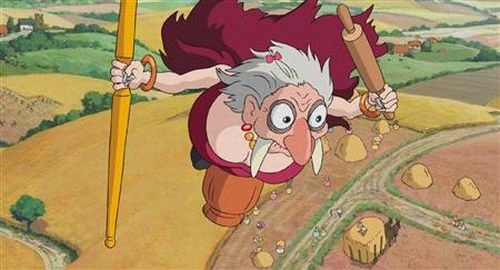
Conclusion
Baba Yaga, the enigmatic witch of Slavic folklore, has fascinated generations with her dual nature and symbolic significance. Originating from ancient beliefs and embodying the untamed forces of nature, she represents both malevolence and wisdom, challenging and guiding those who cross her path. Through encounters with heroes, young maidens, and seekers of wisdom, Baba Yaga imparts lessons of courage, resilience, and self-discovery.
Her presence in literature, art, and contemporary adaptations showcases her enduring cultural impact. Baba Yaga continues to captivate our imagination, offering a gateway into the depths of human nature, the complexity of femininity, and the transformative power of confronting our inner fears and desires.
As we delve into the rich tapestry of Baba Yaga’s legends and interpretations, we are reminded of the timeless allure of folklore and its ability to illuminate the human experience across time and space. Baba Yaga stands as a testament to the enduring power of myth and the universality of the archetypal figures that shape our collective imagination


